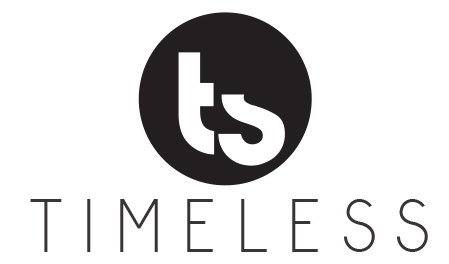
by timelessnc | Nov 20, 2018 | life insurance, Managing Healthcare Expenses
No one plans to spend retirement in a nursing home or an assisted living community. However, that could be a reality for many retirees. According to the U.S. Department of Health and Human Services, someone turning 65 today has a 70 percent chance of needing long-term care in the future. Twenty percent of those individuals will need care for more than five years.1
Long-term care isn’t always provided in a nursing home or other facility. Many seniors need in-home assistance with tasks such as bathing, eating and mobility. Whether the care is provided in the home or in a facility, though, it’s likely to cost thousands of dollars a month. If the care is needed for several months or years, it’s easy to see how the cost could deplete one’s savings.
Fortunately, you can minimize the impact by planning ahead. Below are four common strategies many seniors use to fund their long-term care needs. A financial professional can help you determine which strategy is right for you.
Pay out of pocket.
There’s always the option to pay out of your savings and investments for your long-term care. That may be sufficient if you require minimal help, like hiring someone to run errands or do basic chores.
If you need more intensive assistance, however, you may find it difficult to pay for care out of pocket. A recent Genworth study found that the average assisted living facility costs $3,750 per month. An in-home health aide costs more than $4,000 per month on average.2
Consider what it would mean to pay those bills over several years. While you may cover some costs out of pocket, you may not want to rely on this method as your only funding option.
Use Medicaid.
Many retirees assume that Medicare will cover all their health care costs. That’s not usually the case. There are many services that aren’t covered by Medicare, and long-term care is one of them. Medicaid, on the other hand, will cover stays in nursing homes or other facilities.
There’s a catch to using Medicaid, though. You have to have few assets and little income to qualify for Medicaid protection. That means many seniors are forced to deplete their own assets before they transition to Medicaid funding. If you need to leave assets for your spouse or want to leave a legacy for your family, you may not want to spend down your assets to get Medicaid protection.
Get a reverse mortgage.
If your home is paid off, you may want to tap into the equity to pay for your long-term care needs. Your reverse mortgage lender gives you money for the home’s equity, usually in the form of monthly payments. When you die or permanently move out of the home, you or your heirs sell the property and pay off the reverse mortgage balance.
While a reverse mortgage can be a helpful strategy, there are a few drawbacks to keep in mind. One is that it may not be the right solution if you want to keep the home in the family after you pass away. Your heirs will almost certainly have to sell the home. Also, you’ll need to maintain the home so you can sell it to cover the loan balance. If you can’t afford to keep the home up to date, you may not want to take on a reverse mortgage.
Buy long-term care insurance.
A long-term care insurance policy may be the best strategy for your needs. You pay premiums to an insurer, either in a lump sum or on a periodic basis. The insurer then pays some or all of your long-term care costs if you ever need care in the future. Most policies cover care either in your home or in a facility.
You can adjust the features and benefits on your policy to meet your needs and budget. For example, you can choose the amount of protection, what kind of care is covered and even whether the benefit increases with inflation. Some policies even allow for a death benefit so your heirs receive a portion of any unused coverage.
Ready to develop your long-term care strategy? Contact us today at Timeless Solutions. We can help you analyze your needs and implement a plan. Let’s connect soon and start the conversation.
1https://longtermcare.acl.gov/the-basics/how-much-care-will-you-need.html
2https://www.genworth.com/aging-and-you/finances/cost-of-care.html
Licensed Insurance Professional. This information is designed to provide a general overview with regard to the subject matter covered and is not state specific. The authors, publisher and host are not providing legal, accounting or specific advice for your situation. By providing your information, you give consent to be contacted about the possible sale of an insurance or annuity product. This information has been provided by a Licensed Insurance Professional and does not necessarily represent the views of the presenting insurance professional. The statements and opinions expressed are those of the author and are subject to change at any time. All information is believed to be from reliable sources; however, presenting insurance professional makes no representation as to its completeness or accuracy. This material has been prepared for informational and educational purposes only. It is not intended to provide, and should not be relied upon for, accounting, legal, tax or investment advice. This information has been provided by a Licensed Insurance Professional and is not sponsored or endorsed by the Social Security Administration or any government agency.
18148 – 2018/10/17
Facebook: Odds ar

by timelessnc | Oct 24, 2018 | Estate Planning, life insurance, Managing Healthcare Expenses, Retirement Income Planning
Planning for retirement can seem like a complex process, but it tends to bring unique issues for singles. Married couples often benefit from joint pension payments and dual Social Security income streams, as well as multiple 401(k) accounts and IRAs. Single retirees may find it more challenging to plan for retirement without the benefit of a partner’s income and assets.
Increasing amounts of Americans are single as they enter retirement. That’s especially true for women. According to data from the U.S. Census Bureau, more than half of all women age 65 and older in 2014 were single.1
If you expect to be single in retirement, you may face unique planning challenges and issues. One of the biggest could be the need for long-term care, which is extended assistance with daily living activities such as eating, dressing and bathing. Long-term care is often provided either in a facility or in the home and can cost thousands of dollars per month. According to the U.S. Department of Health and Human Services, 70 percent of retirees will need some form of long-term care.2
Unless you have a strategy in place, long-term care could drain your retirement assets. Below are a few questions you can ask yourself to start planning for long-term care expenses. If you haven’t started planning, now may be the time to do so. It’s never too early to consider the risk and your options.
Who will provide help?
Long-term care is often caused by cognitive issues like Alzheimer’s, Parkinson’s or the aftereffects of a stroke. In the beginning stages of these conditions, a spouse may be able to provide much of the necessary support and assistance. That can delay the need for an in-home aide or a move to a facility.
However, single retirees don’t have the benefit of a spouse to help with day-to-day living activities. Consider who could provide assistance if you should develop a cognitive issue. Do you have grown children in the area? What about other relatives, like a sibling or nieces or nephews? Could you rely on friends or neighbors?
Be careful about depending on friends and family for too much help. While they may be willing to pitch in occasionally, you don’t want to be dependent on someone who has other important obligations. Consider that you may need to pay for a full-time health aide if you wish to stay in your home.
Who can make decisions on your behalf?
Incapacitation is another big concern in retirement. Incapacitation is the inability to make or communicate decisions about your finances or health care. Again, this is often caused by cognitive issues.
Without any input from you, your relatives or doctors may be forced to make decisions on your behalf. They may make choices that you wouldn’t make for yourself. You can avoid this risk by establishing written planning documents such as a power of attorney or a living will. These legal documents provide exact instructions on how your health and finances should be managed and who should make decisions on your behalf.
What are your funding options?
A recent Genworth study found that the average room in an assisted living facility cost $3,750 per month. An in-home health aide was more expensive, costing on average more than $4,000 per month.3 How long could you afford to pay those costs out of your retirement assets? Consider that many people need long-term care for several years.
You may want to look at long-term care insurance. You pay premiums today in exchange for long-term care coverage in the future. Coverage varies by policy, but most insurers cover care that’s provided either in a facility or in a home, and will pay some or all of your costs. A financial professional can help you find the right policy for your needs and budget.
Ready to plan your long-term care strategy? Let’s talk about it. Contact us today at Timeless Solutions. We can help you analyze your needs and implement a plan. Let’s connect soon and start the conversation.
1https://money.usnews.com/money/personal-finance/articles/2016-09-23/many-women-will-be-single-in-retirement-are-you-ready
2https://longtermcare.acl.gov/the-basics/how-much-care-will-you-need.html
3https://www.genworth.com/aging-and-you/finances/cost-of-care.html
Licensed Insurance Professional. This information is designed to provide a general overview with regard to the subject matter covered and is not state specific. The authors, publisher and host are not providing legal, accounting or specific advice for your situation. By providing your information, you give consent to be contacted about the possible sale of an insurance or annuity product. This information has been provided by a Licensed Insurance Professional and does not necessarily represent the views of the presenting insurance professional. The statements and opinions expressed are those of the author and are subject to change at any time. All information is believed to be from reliable sources; however, presenting insurance professional makes no representation as to its completeness or accuracy. This material has been prepared for informational and educational purposes only. It is not intended to provide, and should not be relied upon for, accounting, legal, tax or investment advice. This information has been provided by a Licensed Insurance Professional and is not sponsored or endorsed by the Social Security Administration or any government agency.
18087 – 2018/10/1

by timelessnc | Sep 21, 2018 | life insurance
Risk management is at the core of any strong financial strategy. Before you can try to achieve your biggest goals, you need to protect yourself from risk. All it takes is one costly emergency to throw your strategy off track.
One of the biggest risks you and your family may face is the possibility of an unplanned death. If you’re the primary breadwinner in your home, your death could leave the family in a challenging financial position. Even if you don’t provide most of the income in the house, you likely contribute in other important ways, and your family may struggle to overcome your loss.
Life insurance mitigates the financial risks associated with death. It provides a tax-free lump-sum benefit to your family, friends, business partners or whomever else you may name as a beneficiary. They can use those funds in any manner they like, such as paying off debt, saving for the future or replacing your lost income.
Not all life insurance is the same, though. There are many different types that meet a broad range of needs. However, most types fall into one of two categories: term or permanent. Both offer specific types of protection for specific goals. Below are the differences between the two and how you can use them to meet your objectives:
Term Insurance
As the name suggests, term insurance provides life insurance protection for a defined period of time, or term. You choose your term when you open the contract, and they often span from 10 years to 30 years. The longer your term, the higher the premium is likely to be.
You pay a flat premium every year during the term. As long as you meet the premium requirements, you are covered by a death benefit. At the end of the term, you may have a few options. You can continue the policy, though the premium may be recalculated to reflect your older age. You also may have the opportunity to convert the insurance into a permanent policy, again with a new premium amount.
One important note to consider is that term policies usually don’t have cash value. All of your premium payment generally goes toward the cost of the insurance. If you choose not to renew the coverage at the end of the term, you don’t get your premiums back.
Term policies are effective strategies when you have a finite need for protection. For instance, many parents buy term insurance when they have young children in the home. However, they may no longer need the coverage when the kids are grown and out of the house. You also may consider term insurance that aligns with a long-term loan, like a mortgage.
Permanent Insurance
Permanent insurance is life insurance coverage that stays in place as long as you live, assuming that you make all the premium payments. The premiums for permanent insurance are generally higher than those for term policies because there is certainty that you will pass away at some point during the policy’s life span. In other words, the insurer is certain to pay out the death benefit at some point, which isn’t necessarily the case with a term policy.
Permanent policies also have a cash value component. That means some of your premium payment goes toward the cost of the insurance, but a portion also goes into an account inside the policy. That account grows on a tax-deferred basis. Depending on the policy, the cash value may earn dividends, interest or even growth through market returns.
As you accumulate cash value, you can use it to increase your death benefit or pay down your premiums. You can also use it as a source of tax-efficient income through either loans or withdrawals.
Permanent insurance is a great option when you have an indefinite coverage need. For instance, perhaps you want to leave money for your spouse or children, no matter your age when you pass away. Or maybe you own a business that will need liquidity after your passing.
Ready to develop your life insurance strategy? Let’s talk about it. Contact us today at Timeless Solutions. We can help you analyze your needs and choose the coverage that’s right for you. Let’s connect soon and start the conversation.
Licensed Insurance Professional. This information is designed to provide a general overview with regard to the subject matter covered and is not state specific. The authors, publisher and host are not providing legal, accounting or specific advice for your situation. By providing your information, you give consent to be contacted about the possible sale of an insurance or annuity product. This information has been provided by a Licensed Insurance Professional and does not necessarily represent the views of the presenting insurance professional. The statements and opinions expressed are those of the author and are subject to change at any time. All information is believed to be from reliable sources; however, presenting insurance professional makes no representation as to its completeness or accuracy. This material has been prepared for informational and educational purposes only. It is not intended to provide, and should not be relied upon for, accounting, legal, tax or investment advice. This information has been provided by a Licensed Insurance Professional and is not sponsored or endorsed by the Social Security Administration or any government agency.
17963 – 2018/9/4

by timelessnc | Sep 6, 2018 | life insurance, Managing Healthcare Expenses
Are you planning to purchase life insurance? Or are you already in the process? That could be a wise decision. Life insurance is a valuable financial tool that can protect your family should you pass away. Your life insurance policy will provide a tax-free death benefit to your beneficiaries, which they can use to pay debts and medical costs or for financial stability during a difficult time.
Your eligibility for coverage is based on a number of factors, but your age and health are two of the most important. These factors are analyzed during a process called underwriting. During this time, the life insurance company looks at the proposed coverage and analyzes its potential risk. Essentially, it’s determining when you might die based on your age and your health.
Age is an easy factor to quantify. Health is more difficult. Life insurance companies often use questionnaires and medical exams to learn more about an applicant’s health. The result of that analysis can influence whether a person is eligible for coverage. It can also affect your rating and premium amount. The healthier you are, the lower your premium is likely to be.
You can’t change your health overnight, but there are steps you can take to prepare for the exam. Below are three tips to help you get the best rating possible and reduce your premiums or improve your odds for eligibility:
Cut back on bad habits.
You may already know that you have some unhealthy habits. Maybe your diet could use some improvement. Perhaps you smoke cigarettes or regularly drink alcohol. Now is the time to cut back on those habits, even temporarily. By reducing your trips to fast-food restaurants, you could lower your cholesterol. You could cut back on drinking and boost your liver health.
Smoking is an important habit to consider. Most insurance companies have two sets of rates—one for smokers and one for nonsmokers. If you plan ahead and stop smoking well in advance of underwriting, you may be able to qualify for a nonsmoker rate. As you might imagine, the smoker rate is usually higher than the nonsmoker rate.
Go into the exam as well-rested and healthy as possible.
Blood pressure is a big indicator of heart health and an important metric for life insurance underwriters. Since heart failure is a major cause of death, especially among seniors, life insurance companies will place a heavy emphasis on high blood pressure. Take steps in the lead-up to your exam to have a relatively normal blood pressure level.
Try to get a good night of sleep before your exam, and also try to eliminate any ongoing sources of stress. Get that big project finished at work, or resolve the home repair issue you’ve been dealing with. Think about taking a relaxing walk or some other form of light exercise the morning of the exam. Also think about skipping your morning coffee.
Tell the truth.
You may feel tempted to lie about your health or lifestyle in order to qualify for lower rates. For instance, you may not be honest about your tobacco, drug or alcohol use. Maybe you’re considering being dishonest about your participation in risky activities like sky diving or scuba diving. Or perhaps you’re thinking about omitting from your questionnaire a diagnosis you received in the past or a prescription you currently take.
Life insurers often understand that unintentional omissions happen. However, if you pass away and the insurance company suspects that you intentionally misled underwriters or lied during the application process, it may challenge the benefit payment to your beneficiaries. Resist any temptation to omit information from your medical exam.
Ready to protect your family? Let’s talk about your life insurance strategy. Contact us today at Timeless Solutions. We can help you analyze your needs and develop a plan. Let’s connect soon and start the conversation.
Licensed Insurance Professional. This information is designed to provide a general overview with regard to the subject matter covered and is not state specific. The authors, publisher and host are not providing legal, accounting or specific advice for your situation. By providing your information, you give consent to be contacted about the possible sale of an insurance or annuity product. This information has been provided by a Licensed Insurance Professional and does not necessarily represent the views of the presenting insurance professional. The statements and opinions expressed are those of the author and are subject to change at any time. All information is believed to be from reliable sources; however, presenting insurance professional makes no representation as to its completeness or accuracy. This material has been prepared for informational and educational purposes only. It is not intended to provide, and should not be relied upon for, accounting, legal, tax or investment advice. This information has been provided by a Licensed Insurance Professional and is not sponsored or endorsed by the Social Security Administration or any government agency.
17965 – 2018/9/4




